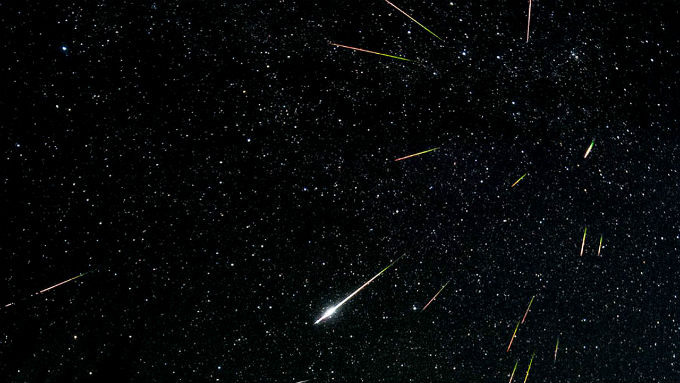 Macy’s may put on a pretty spectacular fireworks show for the Fourth of July, but we’re sure outer space has them beat. The annual Perseid meteor shower is set to kick off on August 11, and experts believe this year’s may be the best sparkly spectacle yet.
Macy’s may put on a pretty spectacular fireworks show for the Fourth of July, but we’re sure outer space has them beat. The annual Perseid meteor shower is set to kick off on August 11, and experts believe this year’s may be the best sparkly spectacle yet.
The cosmic event takes place each August “when Earth ventures through trails of debris left behind by an ancient comet,” according to NASA. An average shower sees about has 80 to 100 meteor showers per hour, but this year is expected to have double the amount with anywhere from 160 to 200 meteors per hour. This means that viewers will see a combo of about two to three faint streaks and bright fireballs appearing every minute. The last time this happened was in 2009, and the spectacle isn’t expected to happen again until 2027.
Not surprisingly, this rare natural light show is attracting the attention of eager spectators wanting to know where to catch a glittery glimpse. Depending on where you are in Harlem, experts suggest spots like any of the beaches along the Harlem River. If you can’t escape the city but still want a shot at seeing the show, go on the roof top of your apartment complex or brownstone or the Great Lawn in Central Park is your best bet if you go between 10 p.m. and 1 a.m. when there’s less light pollution.
Astronomer Jason Kendall heads to Inwood Park in the Inwood neighborhood (way up at the top of Manhattan) whenever he wants to see the stars. ”The Columbia Football Fields turn off their lights at about 10 p.m. or 10:30 p.m., leaving the park dark,” he says on his website. “It’s a great spot to see the stars. It’s also not muddy because the hilltop is Manhattan granite.”
To get to Kendall’s secret spot, take the A Train to the last stop, “come out the stairs at the front of the train, and go up the hill alongside the church,” he advises. “This entrance is right in front of you,” he told Patch.
If you’re not near any of those locations, it’s still possible to watch across the northern hemisphere.
NASA’s general viewing guidelines including:
- Getting to the darkest place possible,
- Allowing 45 minutes for your eyes to adjust, and
- That prime time is between midnight and dawn.
And if you still don’t get a chance to head outside for yourself, NASA will be live streaming the shower during the peak days of Thursday and Friday starting at 10 p.m. ET.
Become a Harlem Insider!
By submitting this form, you are consenting to receive marketing emails from: . You can revoke your consent to receive emails at any time by using the SafeUnsubscribe® link, found at the bottom of every email. Emails are serviced by Constant Contact








